NASA added another feather to its cap when it successfully put the Juno spacecraft inside Jupiter’s orbit on Monday, July 4, 2016, ending nearly a five-year journey through deep space. The path breaking milestone of the Juno space mission was achieved when the spacecraft fired its main engine in a crucial 35-minute burn, slowing down the probe enough to be captured by giant planet’s powerful gravity. The burn started at 11:18 p.m. EDT and ended exactly at 11:53 p.m. PDT (11:53 p.m. EDT).
The autopilot orbit-insertion burn event had everyone on their toes, because it was a make-or-break maneuver. If any serious error had occurred, the entire $1.1 billion mission- which included mapping of Jupiter’s gravitational and magnetic fields, as well as characterizing its composition and inner structure- would all have gone in vain.
Read the official press release from NASA.
This is only the second instance that a spacecraft has entered the orbit around the biggest planet in the Solar System, the first was NASA’s Galileo mission in 1995.
What is the Juno Space mission?
The mission is beautifully explained through a time-lapse video created by NASA. The video is set to Vangelis music, so you know this is going to be really good-
Back in 1989, when the Galileo mission was launched, the spacecraft circled Jupiter for around 14 years, sending back breathtaking images of the planet and its various moons. It also uncovered signs of an ocean beneath the icy surface of Europa, the sixth-closest moon of Jupiter, considered to be the closest contender for searching life outside Earth.
The Juno spacecraft comprises a color camera, called ‘JunoCam’, which NASA says will take ‘spectacular close-up, color images’ of Jupiter. And bewildering it may sound, the probe is also carrying three titanium Lego crew members (you read that right, Lego). One of the Lego figurines has the likeness of Galileo Galilei — the scientist who discovered Jupiter’s four largest moons, while the other two represent the Roman god Jupiter and his wife Juno. These have been included to inspire children to be more interested in math and science.
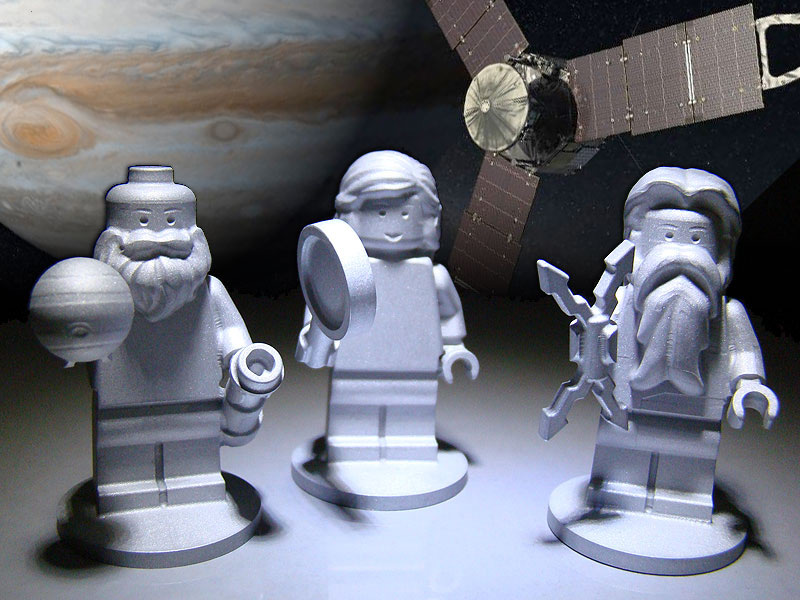
The space probe, built by Lockheed Martin, measures 11.5 feet (3.5 meters) tall and 11.5 feet in diameter, and with its three open solar panels,spans about 66 feet (20 meters). That’s bigger than an NBA basketball court.
Juno was launched from Cape Canaveral on August 5, 2011, and the probe traversed a total distance of 1,740 million miles (2,800 million kilometers) to reach the gaseous planet, making a flyby of Earth to gain speed. Enroute, Juno also became the first spacecraft to travel such a vast distance powered by the sun. The three massive solar wings generated 500 watts of power to run its nine instruments.
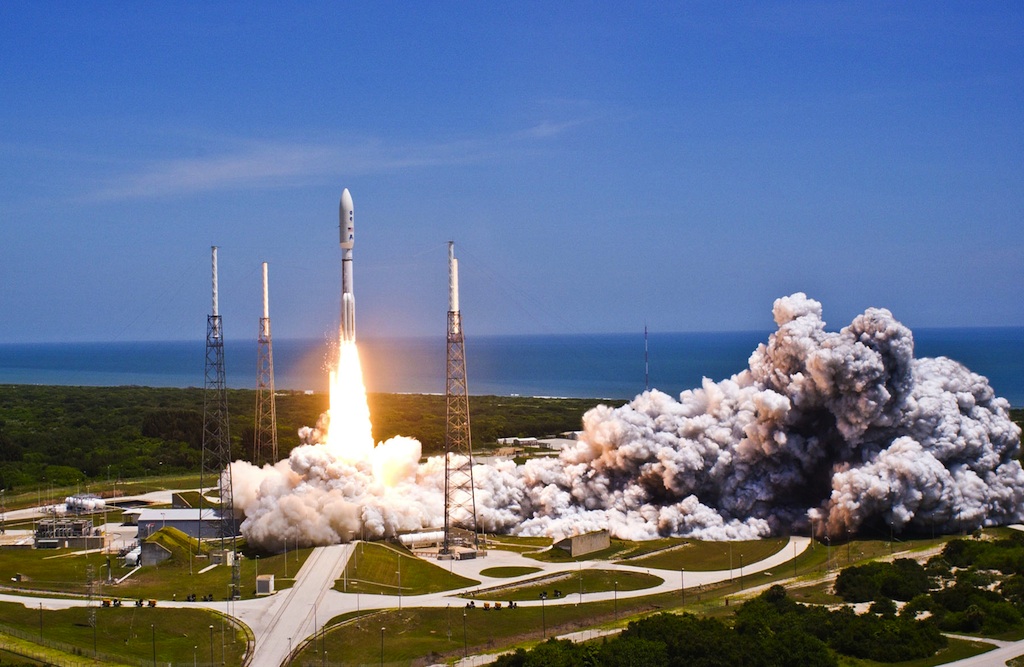
The space mission aims to unravel the secrets that the giants planet beholds, such as the ‘Great Red Spot’- the centuries-old monster storm in Jupiter’s atmosphere that was revealed to be shrinking, according to observations by the Hubble Space Telescope. Apart from that, important questions that may well hold the key to the creation of the Solar System, such as what is the deal about Jupiter’s mystical dense clouds? Whether it has a solid core or not? Is there any water in its atmosphere, if yes, how much? How deep are those colorful bands and what mysteries do they hide?
This will be done by peering through Jupiter’s atmosphere and mapping the interior from a unique vantage point above the poles. The seven science instruments on board Juno will help study Jupiter’s auroras and allow scientists to gain a better understanding of the planet’s origins. structure, atmosphere and magnetosphere.
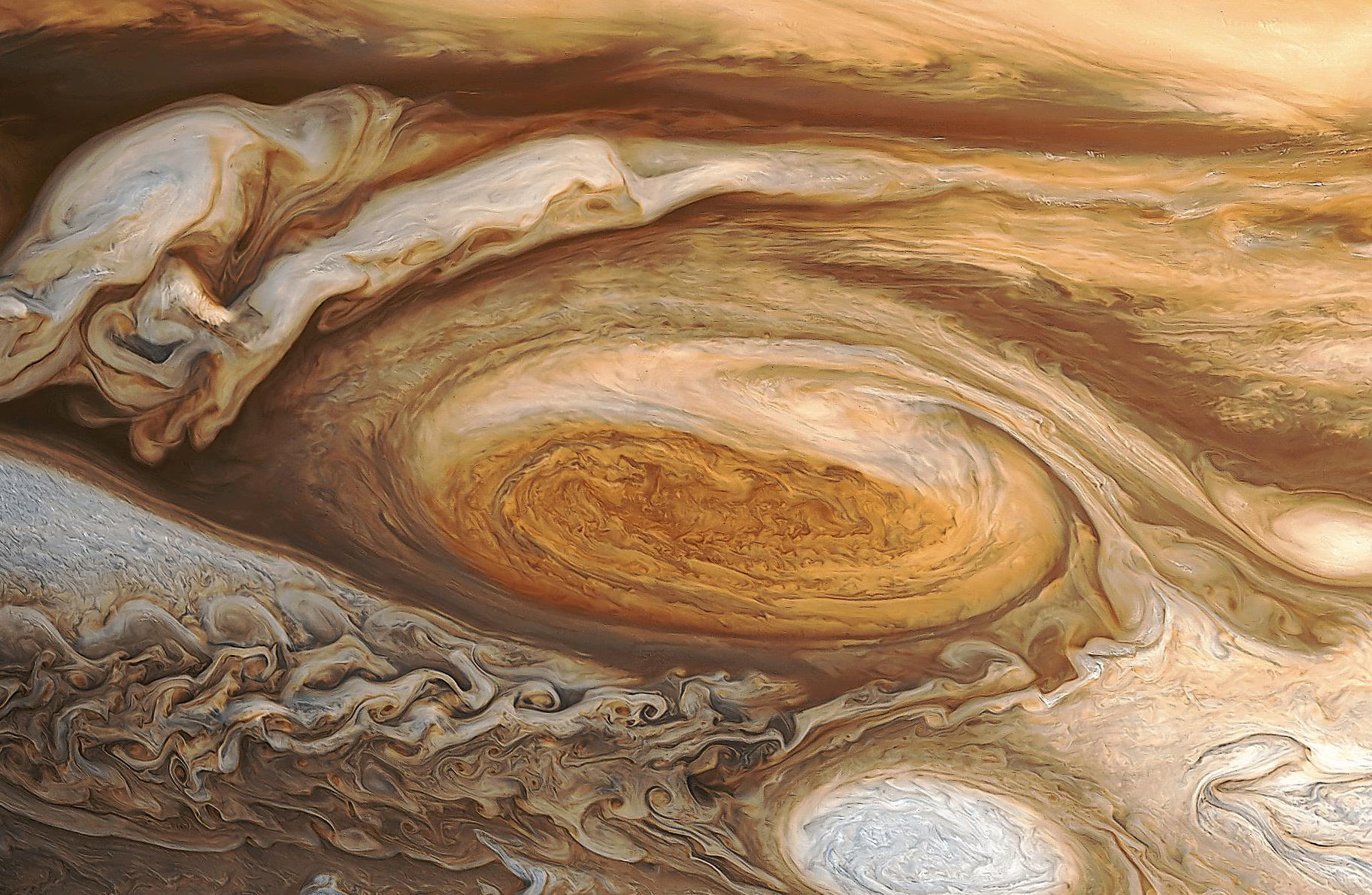
The entire computer and electronic circuitry is shielded by a Titanium armor, protecting the spacecraft from any harmful radiation.
After completing the mission, Juno will deliberately dive into Jupiter’s atmosphere in 2018 and disintegrate- a step necessary to avoid the space probe crashing into one of the planet’s potentially habitable moons.
What lies ahead in the Juno Space Mission?
Under the space mission, the probe’s handlers will turn on, check out and start using the nine scientific instruments onboard over the coming days and weeks. The real action, however, is not scheduled to begin until October.
Another engine burn will be performed by Juno on October 19, in which the spacecraft will move into its 14-day science orbit around Jupiter’s poles. The path will be extremely elliptical, and the probe will cruise nearly 3,100 miles (5oo0 km) upon Jupiter’s clouds, it’s closest approach, and then get all the way beyond the Jovian moon Callisto at its most distant point. If the plan moves ahead successfully, Juno will perform around 30 such orbits, and take the measure of the planet in different ways each time.
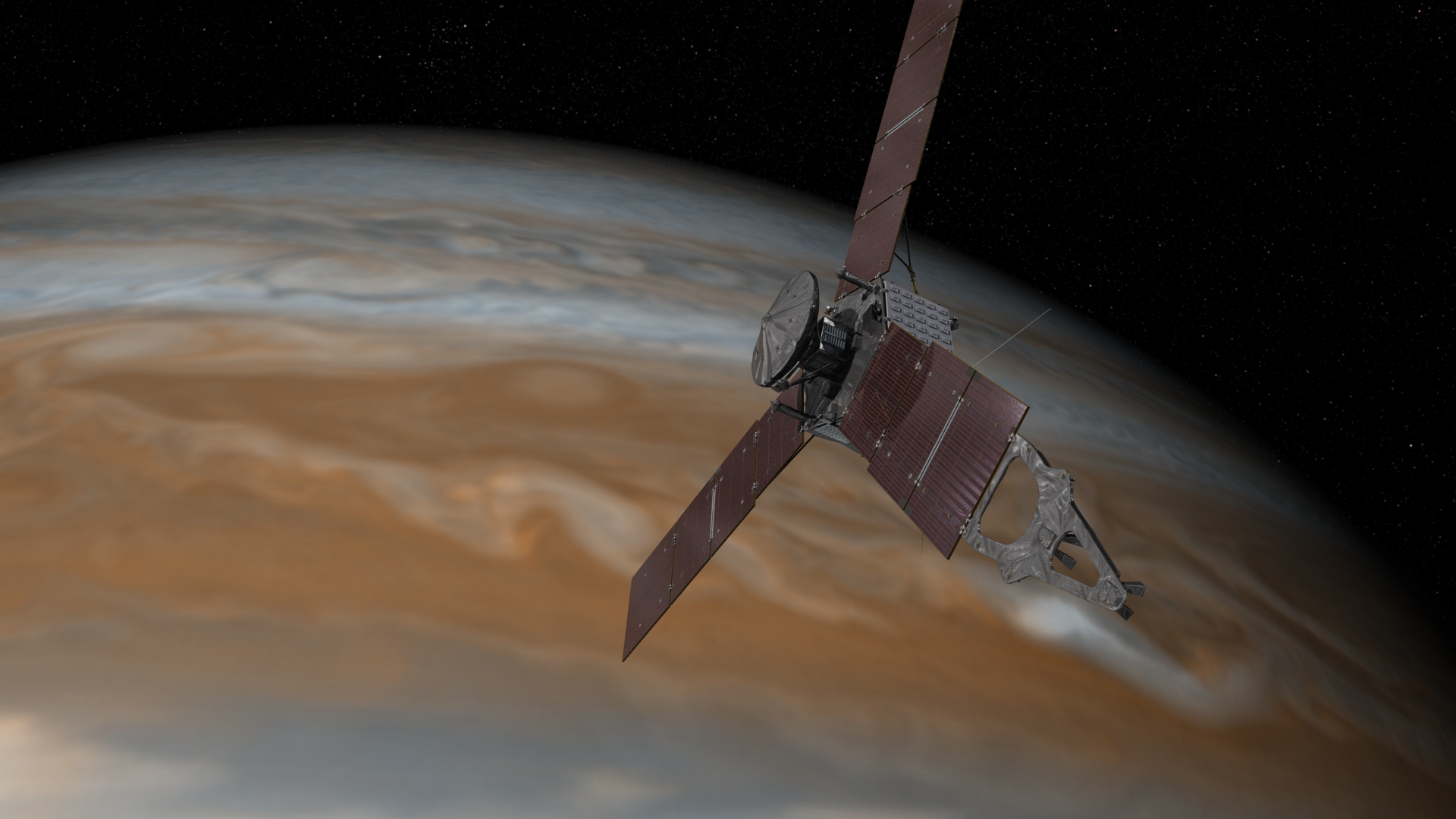
According to Juno lead scientist Scott Bolton, the findings would reveal a great deal about the origins of Jupiter. For instance, the presence of a rocky core would imply that the planet coalesced after rocks and ices began forming in the early solar system, or the lack of a core, could indicate that the planet was created much earlier, through the gravitational collapse of a gas cloud, similar like the sun. Jupiter’s water content would also provide tremendous insight into the planet’s creation.
“It’s probably the single most important number that Juno’s going to bring back from Jupiter. If Jupiter formed far from the sun, where it’s cold, out of blocks of ice — frozen water ice — you’ll get a different amount of water inside Jupiter than if it formed closer to the sun, where it is now, or if it formed some other way than starting with blocks of ice,’ said Juno project scientist Steve Levin, of JPL, during a June 30 news conference.
‘What Juno’s really about is learning about the recipe for how solar systems are made. That first step eventually leads to us. And Juno’s poised to be able to make some great progress in learning about that step,’ added Bolton
Love space? Love gaming? Then we’ve got the article for you!
Can You Learn Rocket Science with Kerbal Space Program?

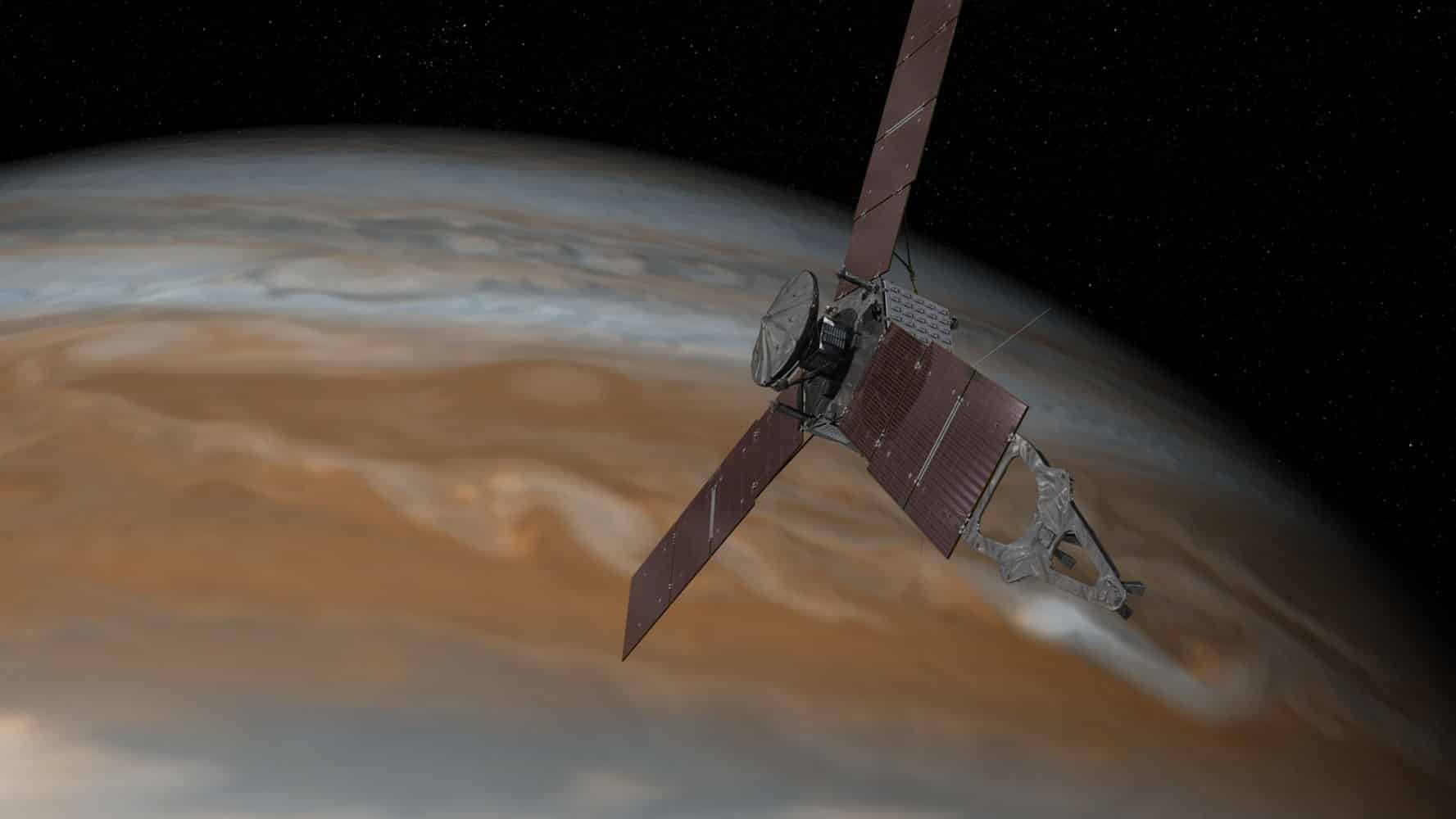











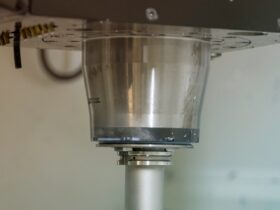
Leave a Reply